East of Angkor Archaeological Park
Daily, 7:30am – 5:30pm
Admission: Included in Angkor Pass ($37/$62/$72)
Washrooms On Site: Yes
The crumbled remains at the top of a gruelling 635 stairs are not worth the climb, nor the drive out to this temple off the beaten path. However, it is a potential choice if you want an oasis of peace and quiet.
If you’re ever driving on a lonely road outside of Angkor Archaeological Park, you’ll probably be able to see Phnom Bok hill in the distance. Though it is closer to Angkor Park compared to the other isolated sites, Phnom Bok Temple sees very few visitors. That makes this hill temple an option for those who are in the mood for a secluded retreat.
The road out to Phnom Bok is standard concrete until you turn onto road 810, where it becomes a red dirt road. We did this temple coming down from Banteay Srei, and our tuk tuk took this route. The ride is quite bumpy, but not uncomfortably so.
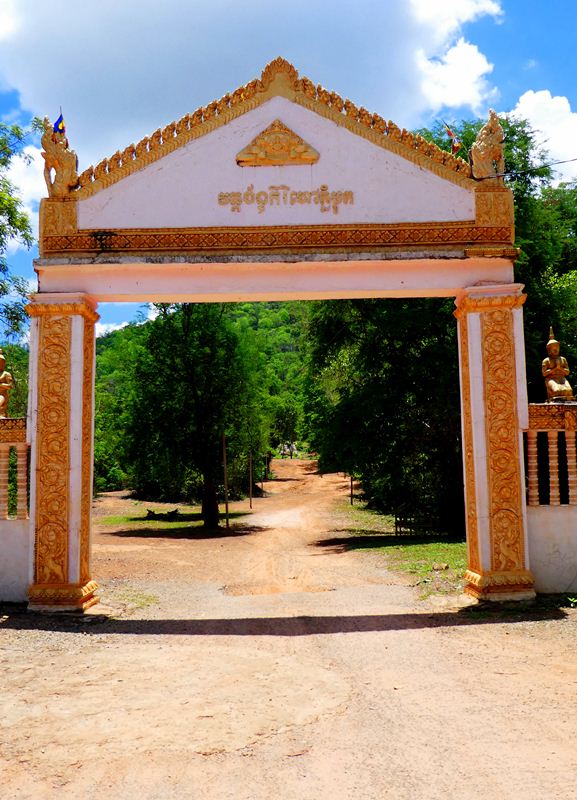
This archway will signal your official entrance to Phnom Bok. Temple ticket control may be here when you get out of your vehicle, but on our visit, they were hiding from the sun at the washroom building.
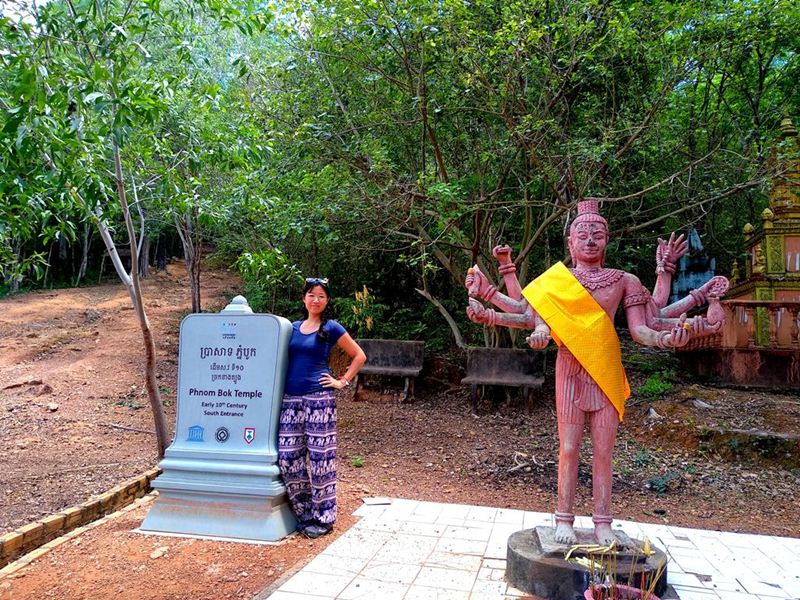
A short walk up the red road will lead you to the little “village” at the base of the hill. As you’re walking through, the local denizens will try to sell you food and drink. Visit the washroom building that is off to the right if you need to, as there are no facilities once you’re at the top. Straight ahead you’ll see the temple sign next to a Bodhisattva, as well as a sight that will make your butt clench: a staircase that seemingly goes on forever up the hill.

635 steps stand between you and Phnom Bok Temple at the very top. If you’ve ever almost vomited with exhaustion during the climb at the Batu Caves stairs in Malaysia, this will make the Batu Caves look like child’s play. This does have one advantage over those stairs in that there is ample shade from the trees for most of the climb… until you get close to the top. With only a couple skinny young trees for any relief, the last hundred steps or so will be a miserable choice: take it slow and broil under the Cambodian sun, or sprint up them to finish this torture as quickly as you can. Don’t forget to look behind you frequently to get a cool view of all those stairs lined up, or of the Khmer countryside once you’ve cleared the treeline.
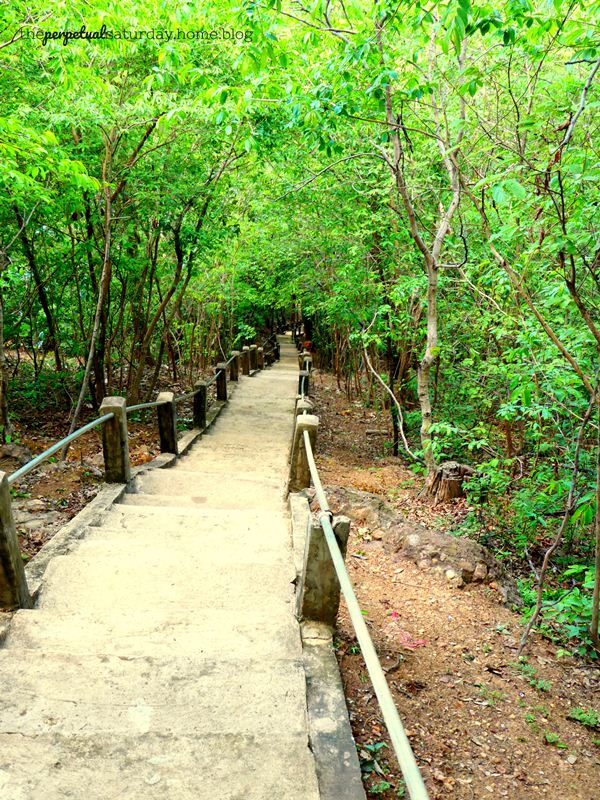
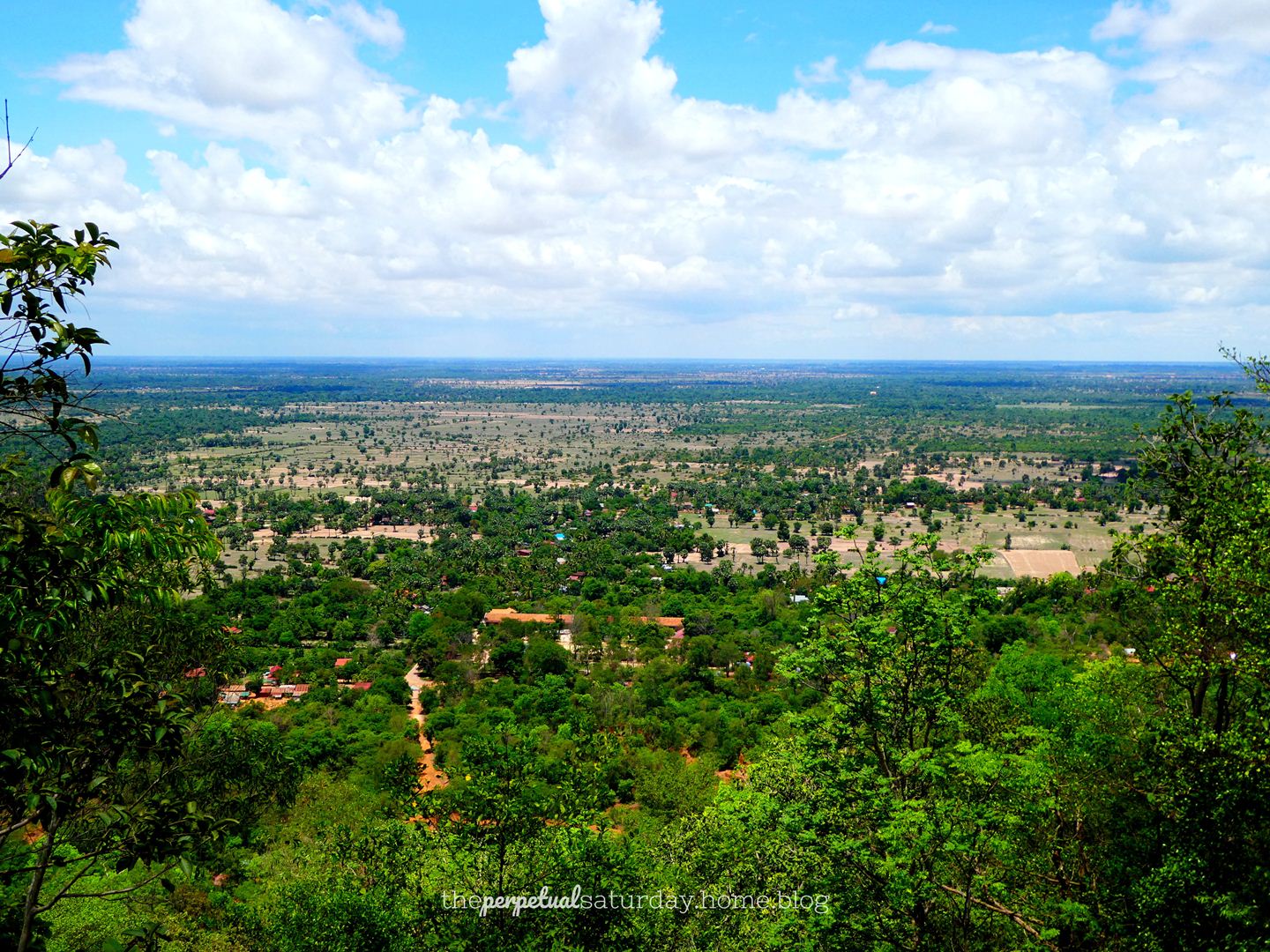
After all the sweat, tears and more sweat, what greets you at the top is highly underwhelming. You get a nice view of the land, true, but the only building you’ll be able to see initially is a ramshackle wooden hut. This is what looks like a caretakers hut, not the temple. Follow the path that skirts to the right of this building.

You’ll then come across a few rock stairs (more?!) and this simple concrete structure.

Inside is a small, typical modern Buddhist temple with mosaic floors and colourful murals painted on the walls and ceiling. Go in and give thanks to Buddha for giving you the strength to conquer all those stairs, or take a much needed rest in this nice shady place, but remember to take your shoes off first.
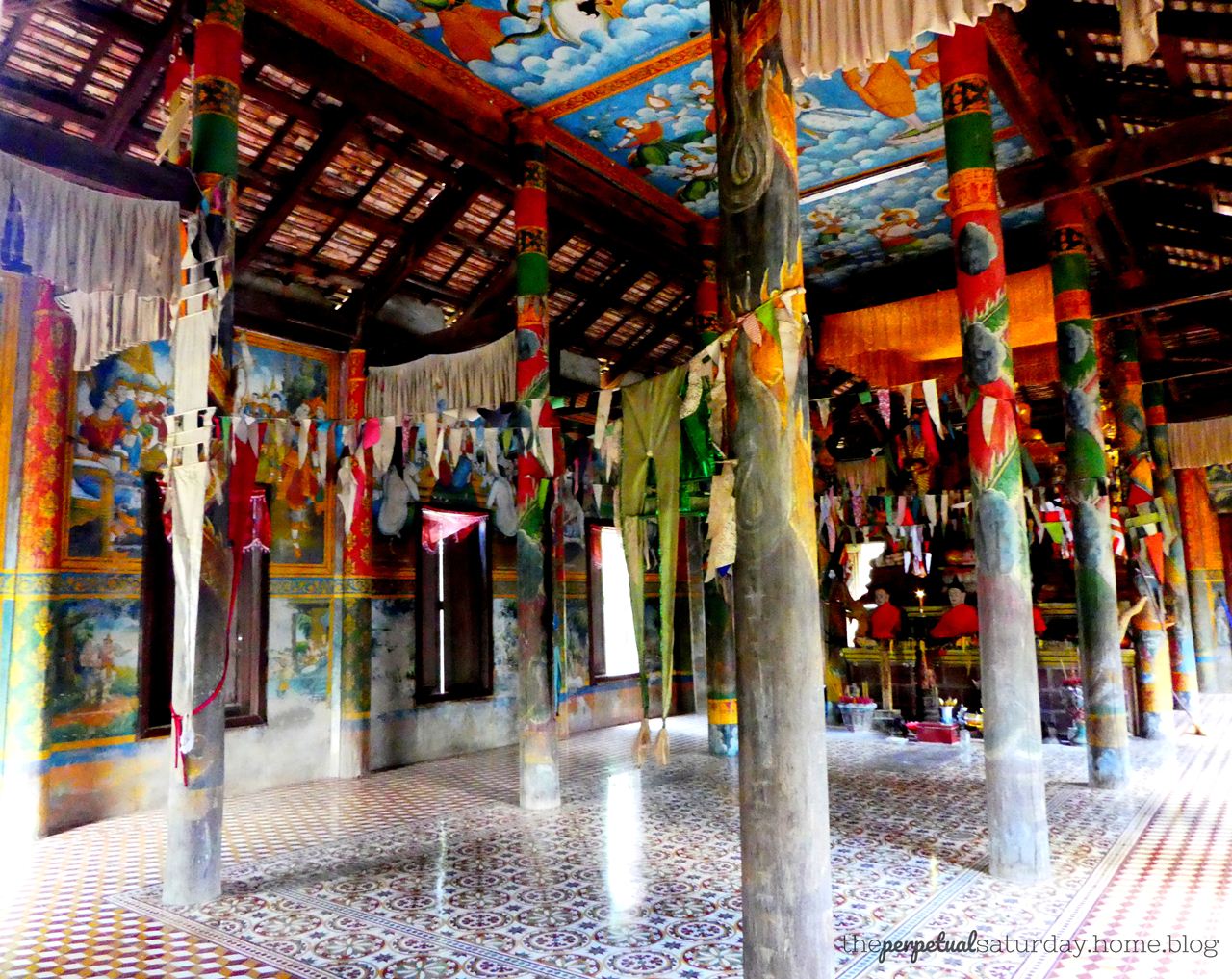
When you pass this modern temple you will finally come to Phnom Bok Temple proper. The front entrance is unfortunately blocked by crumbled rubble. Don’t destroy the stone blocks any further by climbing over them. Continue to follow the path and walk to the right of the temple for a way in.

There will be another crumbled opening in the wall on the next side. This is where you can enter Phnom Bok. Don’t worry, a path has been cleared and its just a little climb over this dirt mound – no rock scaling involved.


Phnom Bok is in a pretty severe state of ruin, with collapsed towers and debris everywhere. A few carvings are still relatively intact, especially the carvings in the “alleys” between the three main towers. Other than that, any lintels that did exist are gone or are so faded that they just look like blocks. There’s nothing but empty walls in the towers you can enter – no Buddha statues, no carvings.
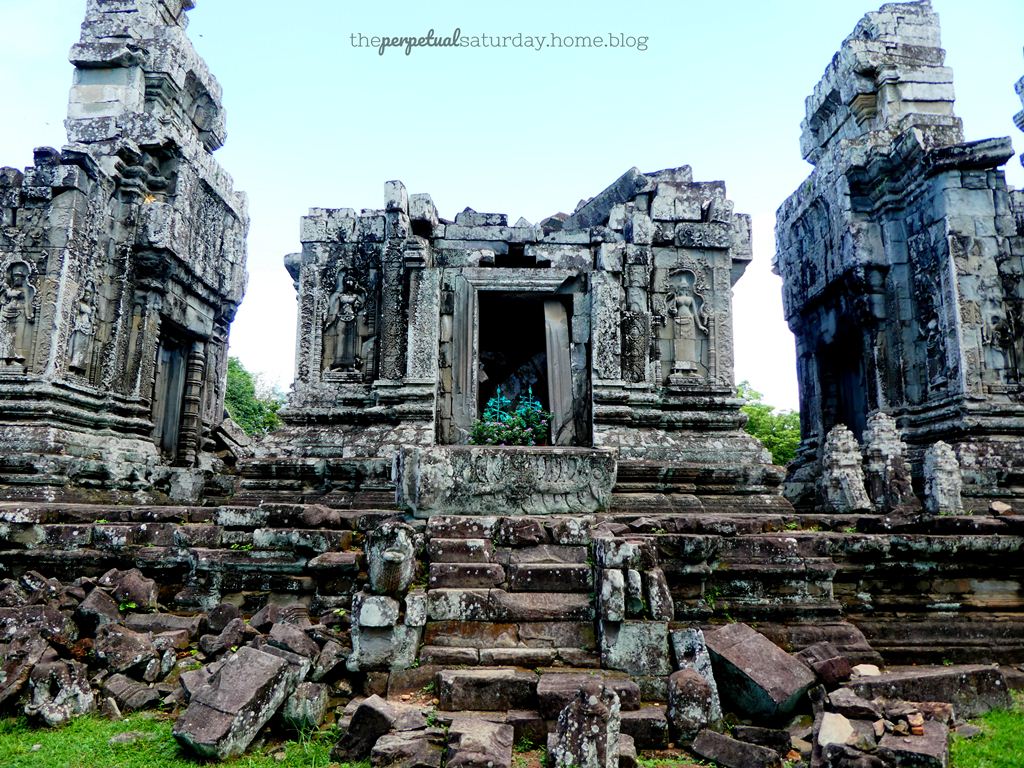
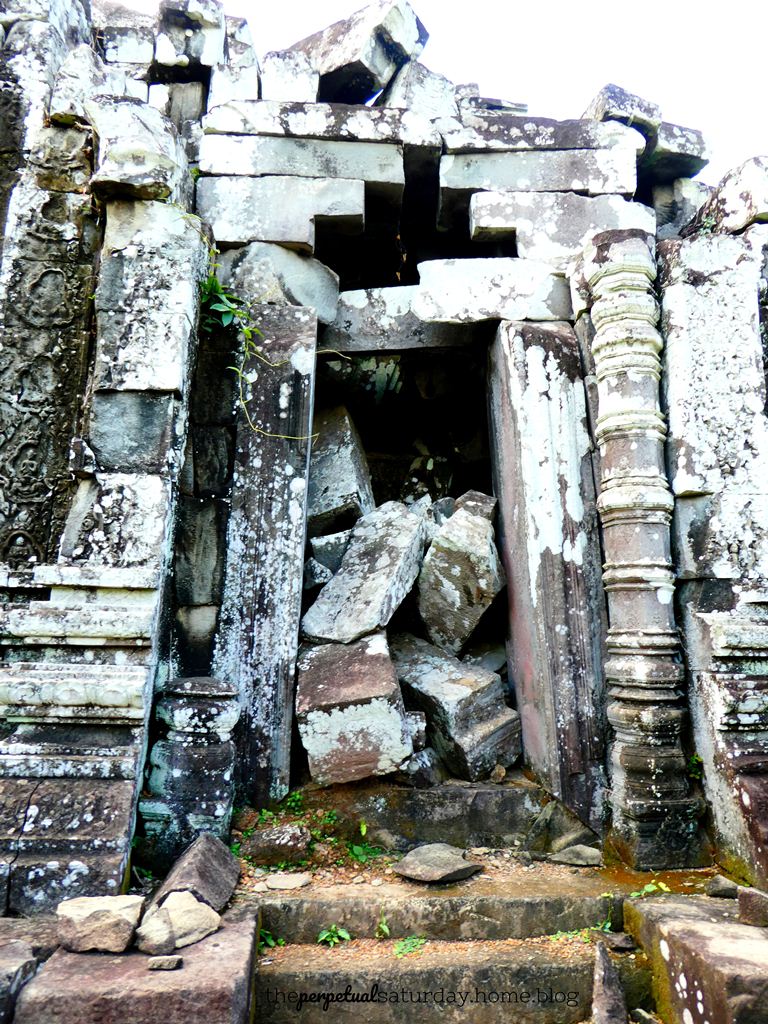
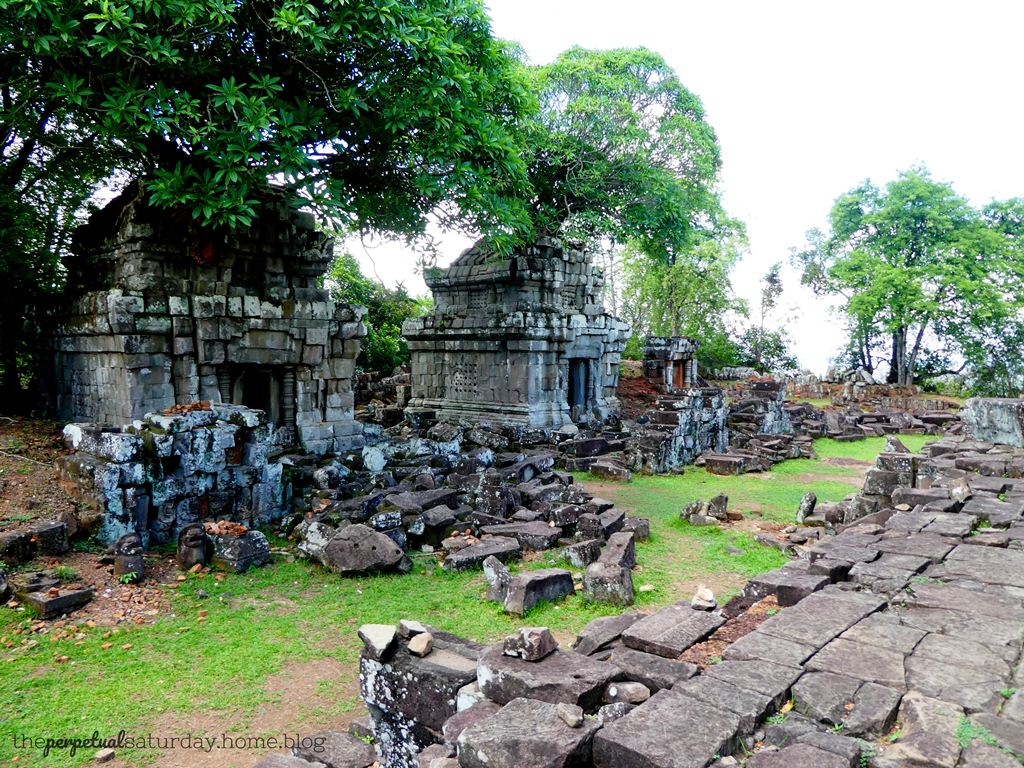
But you expected there would be a breathtaking view, right? One does not climb 635 stairs without getting a view of some sort! Most disappointingly, the view from up here is largely obstructed by trees. You can’t really get any view from the temple foundations, but even by going to the edge of the hill, you’ll only get small glimpses of the countryside through breaks in the wall of trees. The best view to be had at Phnom Bok Temple was back at the very top of the stairs you climbed earlier.

If you’ve already seen any of the other temples in Angkor Park, Phnom Bok Temple won’t offer you anything that you’ve haven’t already seen before, and in better shape. The appeal is the climb – proving to yourself that you’re up to the challenge and being able to say that you did it afterwards. This also gives Phnom Bok its other allure: the quiet. We only saw one other couple descending the stairs while we were entering, and then we had the whole place to ourselves for our visit. Keep in mind that we visited during the low season in June. However, even in the high season, I doubt that busloads of Chinese tourists will want to come here… the pensioners on those tours don’t strike me as the athletic, climbing type. The drive out here will put some people off, and the unending staircase to the temple will deter the rest, leaving you with potentially an entire Angkor temple to yourself. This could be a good spot to meditate, do some journalling, and enjoy a packed lunch. It’s also a worthwhile option if your fat ass has been sitting in a tuk tuk too long and you want some good exercise.
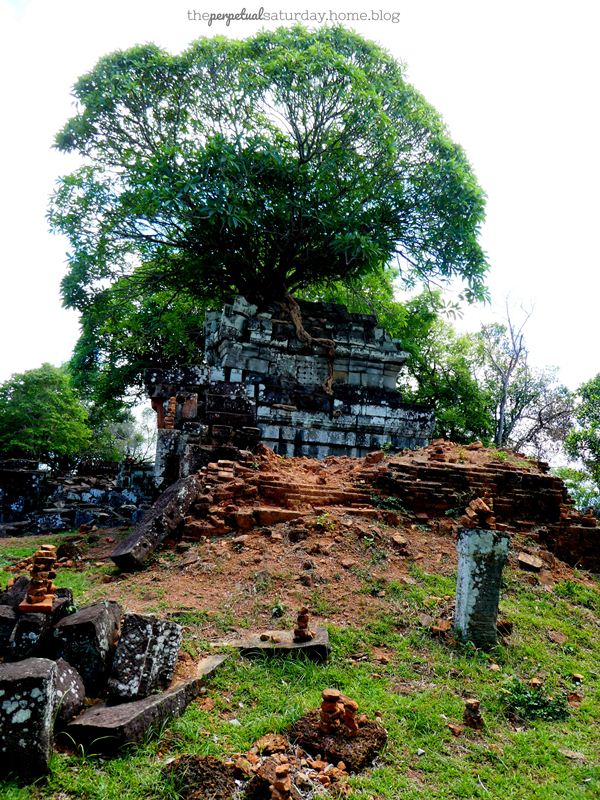
When exiting through the dirt mound you entered, you can take a left and follow a path into the forest. A very short walk away there is this raised hut. We couldn’t quite figure out its purpose as there was only what looked like a deep hole at the top of the raised foundation. A well, perhaps? Nothing pictureworthy, but hey, it’s a thing.

Take one last look at the view you worked so hard for at the top of the staircase before leaving Phnom Bok. Be glad: it’s much easier going down than up!








